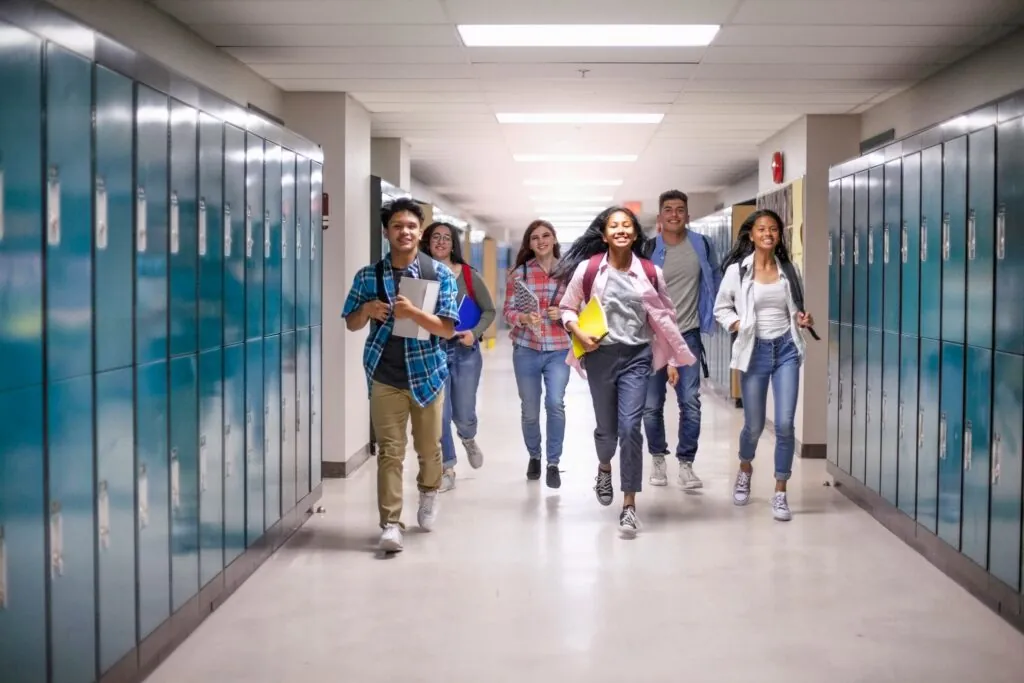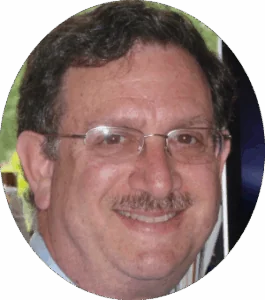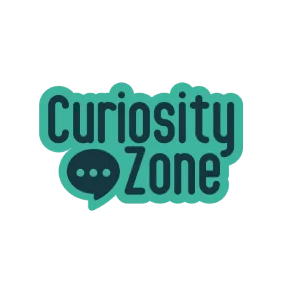
Building Educational Systems that Work
By Steve Lear
For over 50 years, Joe Nathan has dedicated his career to advocating for and empowering youth, families, educators, and community members – especially those representing underserved communities. He has served as a K-12 district public school teacher, project director at the National Governors’ Association, senior fellow at the University of Minnesota’s Humphrey Institute, and a newspaper columnist. In 1988, he founded the Center for School Change (CSC), where he served as Director until 2025. This year, Joe transitioned leadership to his colleague and fellow SLO contributor, Khalique Rogers. Now known as Catalyst for Systems Change, CSC continues to make important, measurable differences in the lives of young people and adults.
We invited Joe Nathan to advise Stevelear.org (SLO) because he combines imagination with deep knowledge of Minnesota and national education systems. Our mission includes helping schools become more effective and efficient. That space is a minefield, with many well-intentioned players and interests at the table. Joe is helping us understand the players, decode their decision-making processes, and package ideas so systems can implement them. Please note that Joe’s opinions are his own and do not represent any institution. We’re grateful for his contributions as we work to (constructively!) change the education industry.
In the following conversation, Joe and I sat down to discuss the current state of youth education, how we arrived at this point, and what we can do to ensure that students have the tools they need to become capable, successful adults.
– Steve Lear

JN: I’ve looked at a lot of research about whether students are smarter. No surprise – researchers differ. In my humble opinion, the most significant impact on what young people know over the last 20 years has been the rise of social media. Most young people, regardless of their ethnicity or income level, get their information from YouTube, TikTok, Instagram, and other platforms.
SL: You’re telling me you think social media has advanced the educational industry and that our young people are now smarter and wiser.
JN: I didn’t say that young people are smarter and wiser. I said that social media advanced their education. That doesn’t mean the schooling. I differentiate between schooling and education.
SL: In your mind, what’s the goal of school?
JN: For me, the goal of school is for young people to graduate with a clear idea of who they want to be, what their dreams are, and how they can get there. I want them to have the skills and knowledge to take constructive steps toward achieving their goals, and graduate with a belief that they can and should help to make a better world.
SL: What do you think is the best platform for accomplishing your vision?
JN: I think it’s a combination of experiences inside and outside of school.
SL: You can definitely gain knowledge through experiences, but don’t you need to have knowledge first before you can gain wisdom from them?
 JN: I think the two can go together. Let me give you two examples. We have worked with elementary schools, including kindergartners, first and second graders, where youngsters were being encouraged to read, a foundational skill. One way to encourage reading was to have the kids put on plays for senior citizens, showing them that they could get a bigger role in the play if they knew how to read.
JN: I think the two can go together. Let me give you two examples. We have worked with elementary schools, including kindergartners, first and second graders, where youngsters were being encouraged to read, a foundational skill. One way to encourage reading was to have the kids put on plays for senior citizens, showing them that they could get a bigger role in the play if they knew how to read.
We also did a playground project with children aged 5 to 7 years old. In the process of designing and building a playground, the kids learned about area and perimeter, and they also visited various playgrounds to see what they might like for their own playground.
There were various committees, including a railroad committee and a sand committee, among others. The kids learned that they could make a difference in the world, and they also learned the value of research, the value of collaboration, and the value of perseverance.
In both of these examples, the students were simultaneously gaining knowledge, skills, and experience.
SL: I’ve always found it challenging that you seem to be so biased towards experiential learning.
JN: Think about how hard many youngsters work in programs like drama, sports, or journalism. Part of the reason is because they know that other people, including adults, are paying attention. The young people have an audience beyond the teacher.
Second, students are more likely to take an assignment seriously if they see value in it, just as kids learn to walk and talk because they get a lot of encouragement from their parents. That encouragement provides a very powerful learning environment, where the kids see the value of doing those things. When kids see the value of reading or writing an essay, I think they’re more likely, in many cases, to take it seriously.
Finally, the value of combining classroom work and community service has been strongly affirmed by researchers. Below, there’s a link to a very helpful one-page summary of research in this area, compiled by University of Minnesota professor Andrew Furco. He explains, “Participation in high-quality service-learning experiences is associated with improved subject matter learning and academic performance, greater academic engagement, increased motivation for learning, improved school attendance and grades, and engagement in higher-order thinking.” (Furco, 2019)
SL: Does this promote a scenario where the teachers are going to have to work harder to plan a class?
JN: I think teachers are going to need to work differently. One of the largest frustrations that teachers express, and one of the most frequently cited reasons for teachers leaving the field of teaching (which they do in droves, unfortunately), is that classroom management has been difficult for them. And yet, in classes of the kind I’ve described, the kids are eager to come to class and eager to learn, because they see direct connections between something important to them and something the teacher is helping them to learn.
SL: Would it be wise for the education industry to create a special role for classroom management?
JN: Almost every school has disciplinarians; they might be called Assistant Principals or Behavior Management Specialists. Even with that, if you look at the statistics in Minnesota, there are literally thousands of kids suspended every year. Despite all these behavior management people, a lot of kids hate school, and come out of school not liking themselves. I think this is one of the reasons why we have such massive problems with drugs. So many kids come out of school who do not really like themselves and need another way to medicate to deal with their unhappiness about themselves and their frustration with their lives.
SL: Do you think this is the majority or a meaningful minority?
JN: It may be a majority. The number of people graduating without marketable skills is very high. We have a state requirement that every student is expected to graduate with a goal and a plan for achieving that goal. They’re supposed to develop this plan in cooperation with their families. And I have surveyed literally thousands of young people in the state about this. The vast majority say they’ve never done that.
SL: When do you think kids consider themselves to be adults? At what age?
JN: I think you would get varying responses from kids. However, according to the U.S. Census Bureau, the number of young adults aged 25-34 who have achieved all four traditional milestones marking adulthood—moving out, getting a full-time job, getting married, and having children—has declined from 45% in 1975 to just 21% in 2024.
I think that is a stunning statistic—pretty reliable research showing, frankly, that we are not doing a good job of helping young people succeed in adulthood in a variety of ways.
SL: What has gone wrong, Joe?
JN: I think that kids are being miseducated. I think many have not learned how to set and accomplish their goals. It’s maybe epitomized not in a statistical study but in the Paul Simon song “Kodachrome.” The first line of that song is: “ When I think back on all the crap I learned in high school/ It’s a wonder I can think at all.” When kids are surveyed, in general, they like being around their friends, but they mostly think high school is a waste of time. A recent study asked about 20,000 young people what they thought of school. Among the responses:
- Most young people say that their experiences in school feel irrelevant and offer few opportunities for agency and choice.
- Young people report that they learn most in school when their experiences feel highly relevant, rigorous, and customized.
- Many young people report that their best experiences in school happen outside of core academics…’
… (Nitkin and Wood, 2022)
Steve, you’ve helped us convene young people at the Minnesota State Capitol to identify their priorities and begin working with legislators to turn their ideas into bills and bills into laws. At the most recent meeting, held in November 2025, we asked 87 young people from all over the state if this had been a good use of their time. Eighty-six said “yes”, one said “no.” We’ve helped young people pass several laws based on their ideas. (See Morrissette, 2025)
SL: Speaking from your experience as an educator, how important is “Finomics” education (the integration of personal finance and economics) to help us change this? You have been a wonderful advocate for getting this curriculum passed and implemented. What is it about Finomics that you think is so crucial for our young people to learn?
JN: I think the financial literacy work you are encouraging schools to do is one of the central things needed for young people to become successful adults. In my opinion, all of the milestones discussed earlier that kids need to achieve to reach adulthood are intimately related to what Finomics is promoting.
SL: What’s been the flaw in the way economics and finance have been taught in the past?
JN: Well, I wouldn’t say there’s one flaw; I’d say there are several. First, it’s not clear what percentage of young people graduate with a strong understanding of financial literacy.
Second, simply reading a chapter and answering questions or writing an essay on a topic are not necessarily the best ways for kids to retain knowledge about how to take care of themselves financially.
As you know, I taught a class where the kids solved consumer problems that adults referred to them, real problems. For example, when the kids dealt with a landlord-tenant situation, where a young woman had lost her deposit and was being kicked out of her apartment because she had not followed the lease, they were dealing with someone who did not understand basic Finomics.
SL: My experience with educators is that they’re some of the most caring people on the planet. So, what is happening? Let’s assume that the educators themselves want the best for their students.
JN: I’m very willing to make that assumption about the vast majority of educators, yes. However, I think that there are several things stopping educators from doing their job. The first thing is that they haven’t been trained to do it.
SL: So, they haven’t been trained to be educators?
JN: They haven’t been trained in a variety of techniques that will produce effective education. Many teachers are frustrated by the rigidity of high school schedules. We know unquestionably that getting deeply into issues takes more time than a 55 to 65-minute class period allows.
Second, teachers are put into institutions that are fundamentally inconsistent with what we know about human development. Where else in society do we separate everyone by age? There’s no research to support that. We know that by age six or seven, kids can vary by at least three and sometimes four grade levels. And yet, we often still treat teenagers as if they were elementary school age, requiring them to see a teacher to get a bathroom pass. Kids are, in many cases, ready for much more responsibility at ages 16-18. But we put them into large high schools that often resemble quasi-prisons to avoid liability for adults when something bad happens, which it almost always does.
Additionally, too often teachers have been asked to take care of student needs that would be better solved by social or mental health workers. We are starting to make some progress on this. Teacher unions have embraced the idea of so-called “community schools”, where social service agencies share space inside schools, providing collaborative services to kids and families, which is a good thing.
SL: While economics has been taught several different ways over the last 50 years, it appears that one of its foundational assumptions is that we live in a society with a “scarcity mentality.” Is there another type of thinking that might be more accurate, and potentially more hopeful?
Let me give you some context. Between 1960 and 1975, our society experienced a tremendous amount of turmoil. And what occurred over that 15-year period, in my opinion, was the emergence of an economic theory that promoted a “scarcity mentality” – resources were scarce, so the job of making money and resource decisions was based on the fact that we just don’t have enough. However, starting in the 1980s, there was an abrupt shift in some economic thinking, suggesting that we might now be living in an era of abundance.
And that is what actually occurred: because we were living with scarcity, we invented things such as processes and tools which ultimately gave us a sense of abundance. Starting in 1980, the stock market experienced a nearly 20-year upward trend, creating significant wealth between 1980 and 2000. It then took a rest, only to explode once again from 2010 to 2025.
And so now you could claim we live in a land of abundance. What are your thoughts on that theory?
JN: I completely agree that we live in a land of abundance. I think that the resources are very badly distributed, very inequitably distributed. According to a variety of studies, my understanding is that we have greater income inequality today than at any point in our nation’s history.
SL: Is society experiencing so much discontent and depression because we’re unable to recognize and appreciate our abundance? In other words, are we still walking around with a scarcity mindset?
JN: I think that’s part of what’s going on, yes.
SL: What’s the solution?
JN: Young people need to have much more experience in the broader world. I think one of the challenges we have is that a lot of games that many young people play, especially young men, lead them to think that in order to accomplish whatever it is they want to accomplish, they have to fight very hard against other people. They’re not learning that if we work together, virtually everybody would have their goals accomplished, and there would be plenty to go around.
SL: Besides parents and grandparents, who else is responsible for educating youth about an abundance vs. scarcity mentality?
JN: In the best of all worlds, this would be a responsibility shared by families, religious institutions, social service agencies, and schools. I strongly encourage you to look at the Search Institute, a Minnesota-based organization that has done solid research to identify 40 developmental assets that lead to success as an adult. In 1990, they outlined a set of skills, experiences, and qualities that help young people develop into caring, responsible, and productive adults. I think it’s really well done. They studied these assets in the lives of millions of young people across the U.S. and around the globe. Their research shows that young people from all backgrounds do better when they have a strong foundation of these strengths.
SL: Early in my career, I learned about the Maturity Continuum, a developmental model popularized by Stephen Covey. It describes a progression from dependence (you take care of me) to independence (I am self-reliant) and eventually to interdependence (we can do it). Is this concept being taught in schools?
JN: Tell me a little bit more about what you mean when you use the word interdependent.
SL: Here’s a personal example. I’m not great at research; it’s not my strength. To accomplish the research I need, I turn to you or to other people for help.
JN: So, I will share my gifts and talents with you, and I hope that you will share yours with me. We will all do better when we share, to use your term, interdependently.
I think that American society right now doesn’t buy into what we just said. What’s promoted is the idea of “What’s in it for me?” and “I need to get what I want.” And to go back to something you said earlier, there is also a mindset of limitations and a lack of abundance. And so, the pie is not large enough for all of us to do well.
SL: Will that kind of thinking shift? I would say that in the 50s, the concept of interdependence was prominent. It emerged during World War II, when we were so outnumbered that, had it not been for the Russians, we would have lost the war. We stopped Japan, but the Russians stopped Nazi Germany. And that cooperation demonstrated the power of working together, a concept that lasted until about 1965. Joe, what will it take for us to get back to that thinking?
Is the educational system the largest contributor to all of the challenges that we’ve had? Or is it parental issues? Is there something we should point out that says this is where we went wrong? Do you think that would help?
JN: I don’t know if it would help. There’s a very helpful study from UCLA that I’ve quoted before, which was released earlier this year. It says that teens and young adults still want many traditional aspects of the American dream, including financial success as a result of hard work and happiness, but they remain skeptical about achieving it due to economic obstacles.
Now I’m going to ask a question that you have, in my opinion, very wisely asked in almost every conversation that we have. Five or ten years from now, if you were very successful, what would have been accomplished? What is your goal?
SL: By the time I’m 80, I would like to see the financial planning industry take a true leadership role in advancing a platform of generosity. I’m defining generosity as the allocation of three resources: time, money, and mindset. I believe that generosity is what’s needed to solve many of our problems.
And my second objective is to make Minnesota one of the top five most financially literate states in the country. I’m working with a donor and the University of Minnesota to explore the possibility of conducting a long-term research project on the financial literacy of high school students. I’m trying to move that study into both the university and vocational systems, while also building up the industry of financial literacy educators.
So, what do we, the older generation, need to do to help build a society of interdependence that can help repair the world?
JN: I am trying to do four things simultaneously:
- Write newspaper columns that promote a sense of possibility and hope and cite examples of good things to reinforce the idea that we can make progress.
- Work with adults, such as yourself, to help mobilize others to accomplish the kinds of things we’ve been talking about.
- Work with Khalique Rogers, my successor at Center for School Change (now known as Catalyst for Systems Change), to help youth see that they can make a positive difference in the world, and that it is possible to move toward, using your word, a sense of interdependence—for by moving toward that, we all do better.
- Help change the educational system to move in the directions that I’ve talked about.
These are the four things I’m trying to do at age 77. I’ve thought about this quite a bit.
SL: You articulated it exceptionally well! And everything you said at the end is what, for me, is so admirable about you. Your insights provide hope and direction for making real changes in our educational system—and hope for a better world is what stevelear.org is all about.
Thank you, Joe; I learned a lot.
JN: I learned a lot, too. That’s called interdependence, right?!
TO LEARN MORE:
Andrew Furco, Research Summary: Service-Learning and K-12 Student Development (Minneapolis, February 2019), Center for School Change, accessible at https://centerforschoolchange.org/wp-content/uploads/2019/03/Furco-Research-K-12-Service-Learning-Research-Summary-Furco-February-2019.pdf.
Paul Hernaz and Jonathan Vespa, “Most Young Adults Had Not Reached Key Milestones of Adulthood in 2024,” America Counts: Stories, U.S. Census Bureau, August 5, 2025, https://www.census.gov/library/stories/2025/08/most-young-adults-had-not-reached-key-milestones-of-adulthood-in-2024.html.
Mikki Morrissette, “Commentary: Listening to Minnesota Students Discuss 2026 Legislative Priorities,” Minnesota Women’s Press, November 2025, accessible at https://www.womenspress.com/commentary-listening-to-minnesota-students-discuss-2026-legislative-priorities/
David Nitkin and Jenee Henry Wood, “Insights from a Year of Listening,” Transcend, accessible at https://transcendeducation,org/conversations-with-kids-insights-from-a-year-of-listening/
“Developmental Assets,” Search Institute, November 8, 2025, Search Institute.
“Young people still want the American Dream, but it feels out of reach,” Center for Scholars and Storytellers@UCLA, January 2025, American Dream Research Report.

